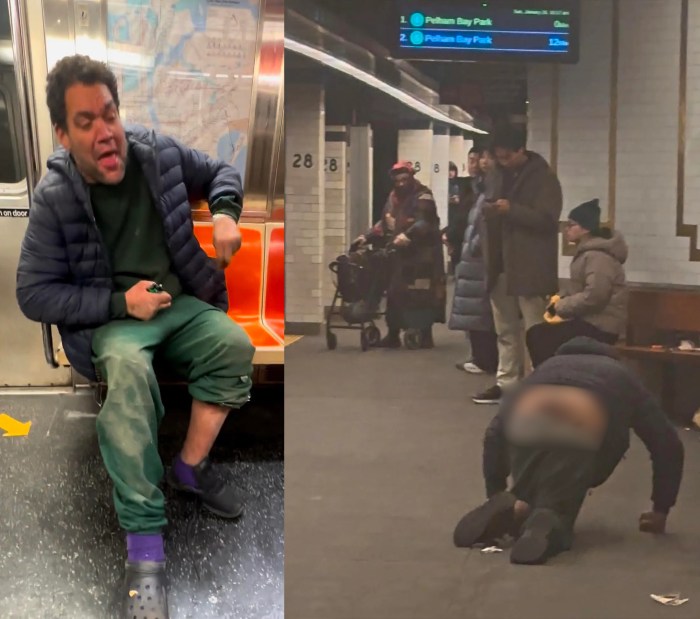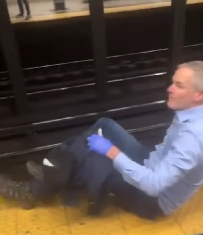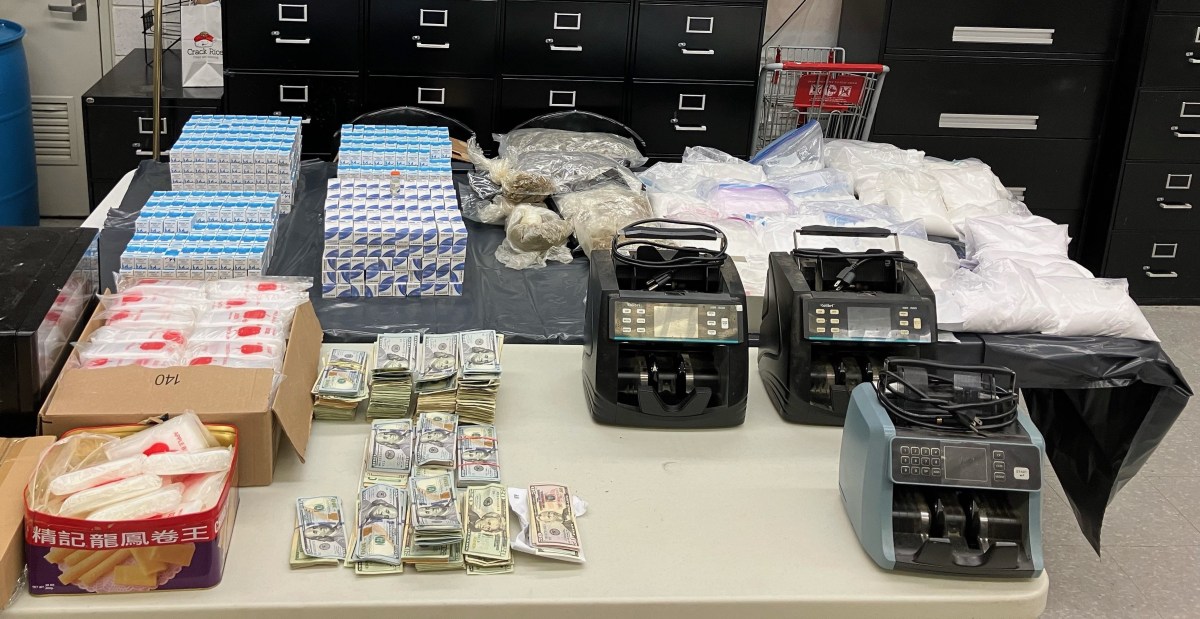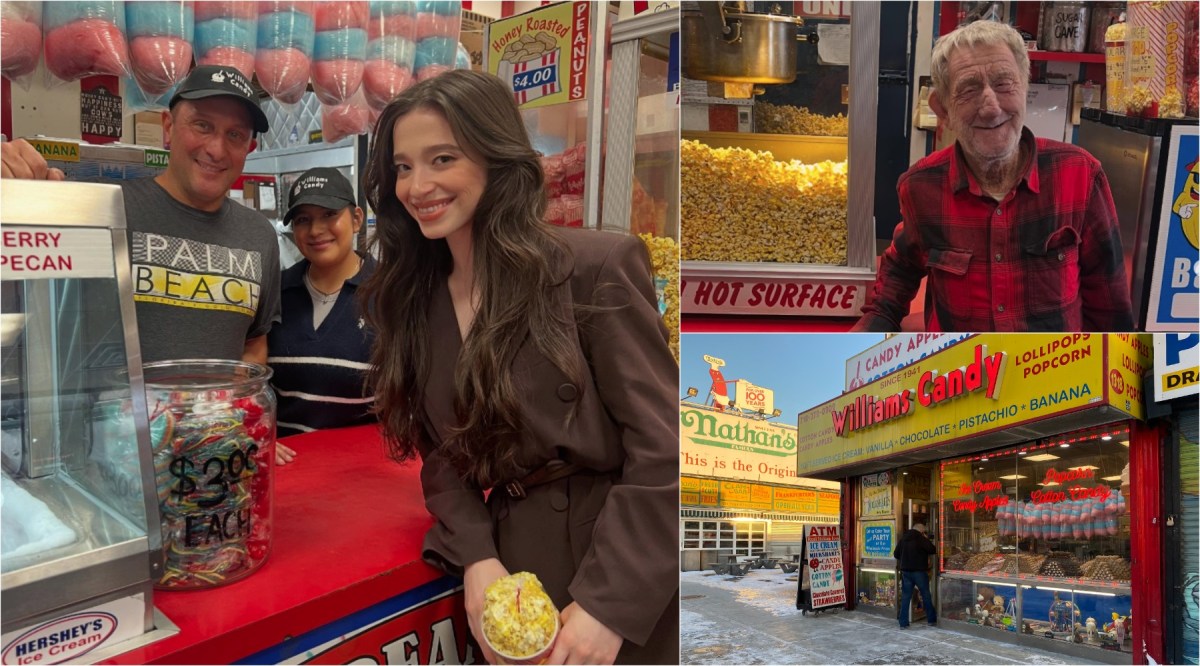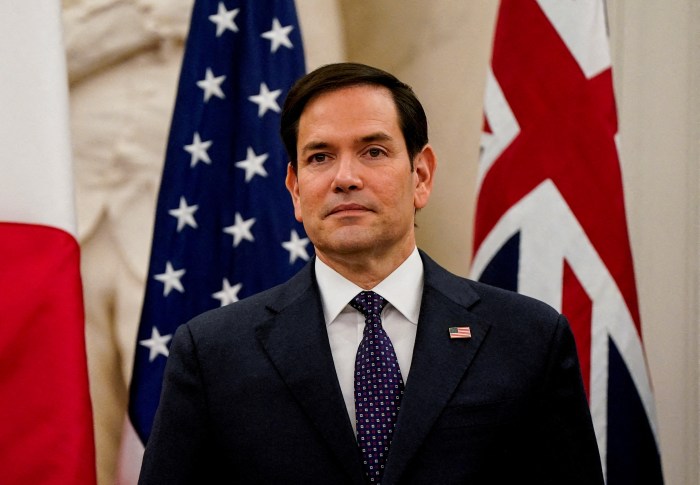-
 Freemans
FreemansEnd of Freeman Alley off Rivington Street
Cozily tucked away in an alleyway, Freemans is a rugged tavern offering American fare like macaroni and daily fish entrees.
Black Ant
60 Second Ave.
Care to try a meal with grasshoppers and ant salt? Stop by this Mexican restaurant for a modern meal.
theBoil
139 Chrystie St.
A Cajun seafood bar offering crawfish, lobster, crab and shrimp by the pound, along with raw oysters and clams.
” data-id=”111736673″ data-link=”https://amnewyork.wpengine.com/wp-content/uploads/2019/10/8800_image.jpg” class=”wp-image-1.11736673″/>Photo Credit: Linda Rosier -
 Attaboy
Attaboy134 Eldridge St.
Replacing the old speakeasy Milk & Honey, this hidden hangout has no phone or website, and serves creative cocktails without a menu.
K-ONE Karaoke Bar
97 Bowery
For late-night karaoke, K-ONE’s full bar, private rooms and funky décor create a fun atmosphere.
La Linea
15 First Ave.
The relaxed vibe, live DJ sets and half-priced happy hour drinks make La Linea a neighborhood go-to.
” data-id=”111736747″ data-link=”https://amnewyork.wpengine.com/wp-content/uploads/2019/10/8801_image.jpg” class=”wp-image-1.11736747″/>Photo Credit: Linda Rosier -
 Bowery & Vine
Bowery & Vine269 Bowery
In addition to a wide variety of international wines, Bowery & Vine also boasts an unique liquor selection.
Blue & Cream
1 E. First St.
This upscale boutique sells its own house line, as well as popular brands like Rag & Bone, Smythe and Equipment.
myplasticheart
210 Forsyth St.
A narrow shop full of figurines, collectibles, artwork and books.
” data-id=”111736670″ data-link=”https://amnewyork.wpengine.com/wp-content/uploads/2016/04/image-15.jpeg” class=”wp-image-1.11736670″/>Photo Credit: Linda Rosier -
 New Museum
New Museum
235 Bowery
Dedicated solely to contemporary art, the New Museum highlights the work of under-recognized artists from around the world.
Bowery Ballroom
6 Delancey St.
This three-level concert venue books well-known and up-and-coming bands, with shows every night of the week.
Sara D. Roosevelt Park
East Houston and Chrystie streets
A long, thin stretch of green space, this park contains playgrounds, basketball and volleyball courts and a soccer field.
” data-id=”111736669″ data-link=”https://amnewyork.wpengine.com/wp-content/uploads/2016/04/image-16.jpeg” class=”wp-image-1.11736669″/>Photo Credit: Linda Rosier -
 Trains:
Trains:B, D to Grand Street
F to Second Avenue
J, Z to Bowery
Buses:
M15, M21, M103, B39
” data-id=”111736667″ data-link=”https://amnewyork.wpengine.com/wp-content/uploads/2019/10/8802_image.jpg” class=”wp-image-1.11736667″/>Photo Credit: Linda Rosier -
 Median sales price: $755,000
Median sales price: $755,000
Number of units: 16
Median rental price: $3,000
Number of rentals: 121
(Source: StreetEasy)
” data-id=”111736672″ data-link=”https://amnewyork.wpengine.com/wp-content/uploads/2019/10/15425_image.jpg” class=”wp-image-1.11736672″/>
Photo Credit: Linda Rosier -
 An eight-story condo-hotel combo will replace 138-142 Bowery, where three historic buildings dating to the 1790s were recently demolished.
An eight-story condo-hotel combo will replace 138-142 Bowery, where three historic buildings dating to the 1790s were recently demolished.Five properties spanning 134-142 Bowery were acquired by developer Emmut Properties in 2015 for $47 million. With retail space on the first floor, the building will include 46 hotel rooms and 21 apartments, because the area’s zoning laws wouldn’t allow for a strictly residential building, according to Emmut.
“Emmut Properties realizes this building site has a great deal of history, and we want to do everything possible to preserve the look and feel of the Bowery,” the developer said in a statement about the project.
However, some residents attempted to stop the development and are still upset that the ancient buildings are gone.
“There was definitely great angst,” said Andrew Berman, Greenwich Village Historical Society executive director. “The Bowery definitely has a very unique role in our city and our country’s history, and so much of that history is being erased.”
The new building is expected to open at the end of 2017.
” data-id=”111736668″ data-link=”https://amnewyork.wpengine.com/wp-content/uploads/2019/10/15427_image.jpg” class=”wp-image-1.11736668″/>Photo Credit: Linda Rosier
New developments are replacing many of the Bowery’s 18th and 19th century low-rise buildings, but residents insist the nabe’s artistic culture is here to stay.
The tiny area is surrounded by SoHo, Chinatown and the Lower East Side and incorporates characteristics of each, but it has also become a hotspot for restaurants, nightlife and art galleries in its own right.
“What I love most about it is its sort of this rock ‘n’ roll, artist-chic vibe you’re only going to find there,” said Joanne Gamel, a licensed broker with the real estate group Citi Habitats.
“[You] have to be willing to feel that bit of grunge” to live on the Bowery, she added.
The Bowery Ballroom and the Bowery Electric, along with several smaller music venues, keep up the legendary scene started by CBGB and continue to attract musicians and music-lovers.
The artistic atmosphere won’t be easily eradicated by luxury apartment buildings or new storefronts, locals said.
Dilapidated walkups are being torn down or completely renovated, and the new buildings are often boutiques. Side-by-side, 250 Bowery, which opened in 2012, and 260 Bowery, set to open in 2018, are both luxury buildings capped at eight stories.
The street is less of a tourist attraction than the shopping districts in neighboring SoHo, so it isn’t overrun with people or traffic. But despite the grungy feel, the cost of buying a home in the area is rising.
The median sales price on the Bowery in 2015 was $725,000, according to StreetEasy. That was down from the overall Manhattan median sales price of $965,000, and it was a 16% decline from the 2014 Bowery number of $899,000. But 2014 saw a 63% rise from the 2013 median sales price of $550,000.
The median rent on the Bowery in 2015 was $3,000, according to StreetEasy, close to the $3,195 for Manhattan as a whole.
Though local residents are grateful that new developments aren’t casting long shadows, the noise and scaffolding from the constant construction can be a nuisance.
“It’s really annoying for me, my cat and my dog,” said 22-year-old Ariel Greene, adding that she has to wait for a break in the noise to take her canine companion to Sara D. Roosevelt Park, the local greenspace at Chrystie and East Houston streets.
However, the area’s charms make up for its small setbacks. Walking down the Bowery, its prolific art scene is evident in the 15 art galleries that lined the strip, including The Hole, the Bridget Donahue gallery and the New Museum.
Meanwhile, new eateries and shops open regularly, such as Vandal, a restaurant and nightclub that opened on Bowery in January, and Deepcover, a men’s vintage store that came to Allen Street in February.
“The restaurant scene around here is crazy,” said Ronda Kave, owner of Roni-Sue’s Chocolates on Forsyth Street. “It seems like you can’t even walk around here once a week and not see a new place.”
Find it:
The Bowery runs north to south from East Fourth Street/Cooper Square down to Canal Street. To the east is Allen Street below Houston Street and First Avenue above it, and to the west is Bowery Street.




